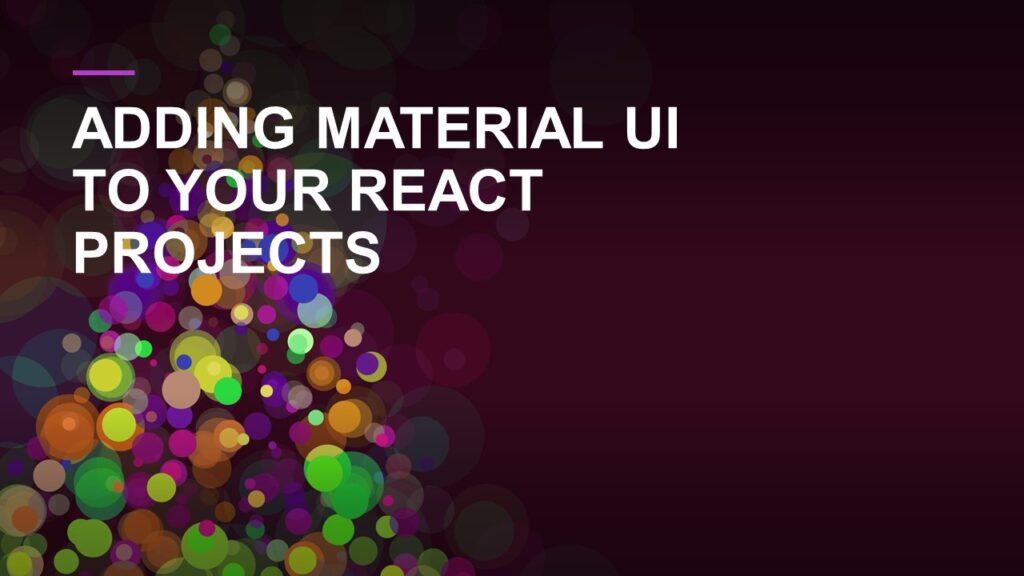Material UI is a popular and comprehensive UI framework for React applications that embraces Google’s Material Design principles. In this introduction, we’ll delve into the essence of Material UI, understanding what it is, why it’s significant, and how it can revolutionize the way you build user interfaces.
Material UI
At its core, Material UI is a React UI component library that offers developers a wealth of pre-designed, customizable building blocks to create stunning user interfaces. Think of it as a toolbox filled with well-crafted elements, from buttons and cards to complex navigation and layout components. Each element follows the principles of Material Design, resulting in consistent aesthetics and interactions throughout your application.
Unpacking Material Design
Material UI’s foundation is rooted in Material Design, a design language pioneered by Google. Material Design introduces a visual language that imitates the feel of real-world materials and light. It emphasizes clean lines, subtle animations, and a focus on usability. The goal is to create interfaces that not only look pleasing but also make user interactions more intuitive and enjoyable.
Installation
To kickstart your journey with Material UI, you’ll need a basic understanding of React. Once you have that foundation, installing Material UI is as simple as installing any other package through npm or yarn. From there, you can explore the extensive documentation, which provides guidance on using components, theming, and best practices.
Create a React Project (if not already done)
If you don’t have a React project set up, you’ll need to create one. You can use the following command if you’re using npm:
npx create-react-app my-material-ui-appReplace “my-material-ui-app” with your preferred project name. If you’re using yarn, you can use:
yarn create react-app my-material-ui-appNavigate to Your Project Directory
After creating your React project, navigate to its directory using the terminal:
cd my-material-ui-appInstall Material-UI Packages
Now, you’re ready to install the Material UI packages. Material UI is split into several packages, allowing you to pick and choose the components you need. To install the core components and the styling solution, you’ll typically need @mui/material and @mui/styles.
npm install @mui/material @mui/stylesUsing yarn:
yarn add @mui/material @mui/stylesSet Up the Theme Provider (Optional but Recommended)
Material-UI components often rely on a theme to manage styling and customization. To utilize the theming capabilities of Material UI, you’ll need to wrap your app with a ThemeProvider. This is typically done in the root src/index.js file of your React project.
Import the necessary modules at the top of your src/index.js file:
import { ThemeProvider, createTheme } from '@mui/material/styles';Create a theme using createTheme:
const theme = createTheme();Wrap your App component with the ThemeProvider and pass the theme as a prop:
ReactDOM.render(
<ThemeProvider theme={theme}>
<App />
</ThemeProvider>,
document.getElementById('root')
);
Using Material-UI Components
Now that Material UI is installed and your project is set up to use the theme, you can start using Material-UI components in your React application. Import the components you need from @mui/material and start incorporating them into your UI.
For example, to use a Button component:
import React from 'react';
import Button from '@mui/material/Button';
function MyComponent() {
return (
<Button variant="contained" color="primary">
Click Me
</Button>
);
}
export default MyComponent;
We have now successfully installed Material-UI in our React project and created a simple component using Material UI’s Button.
![]()




